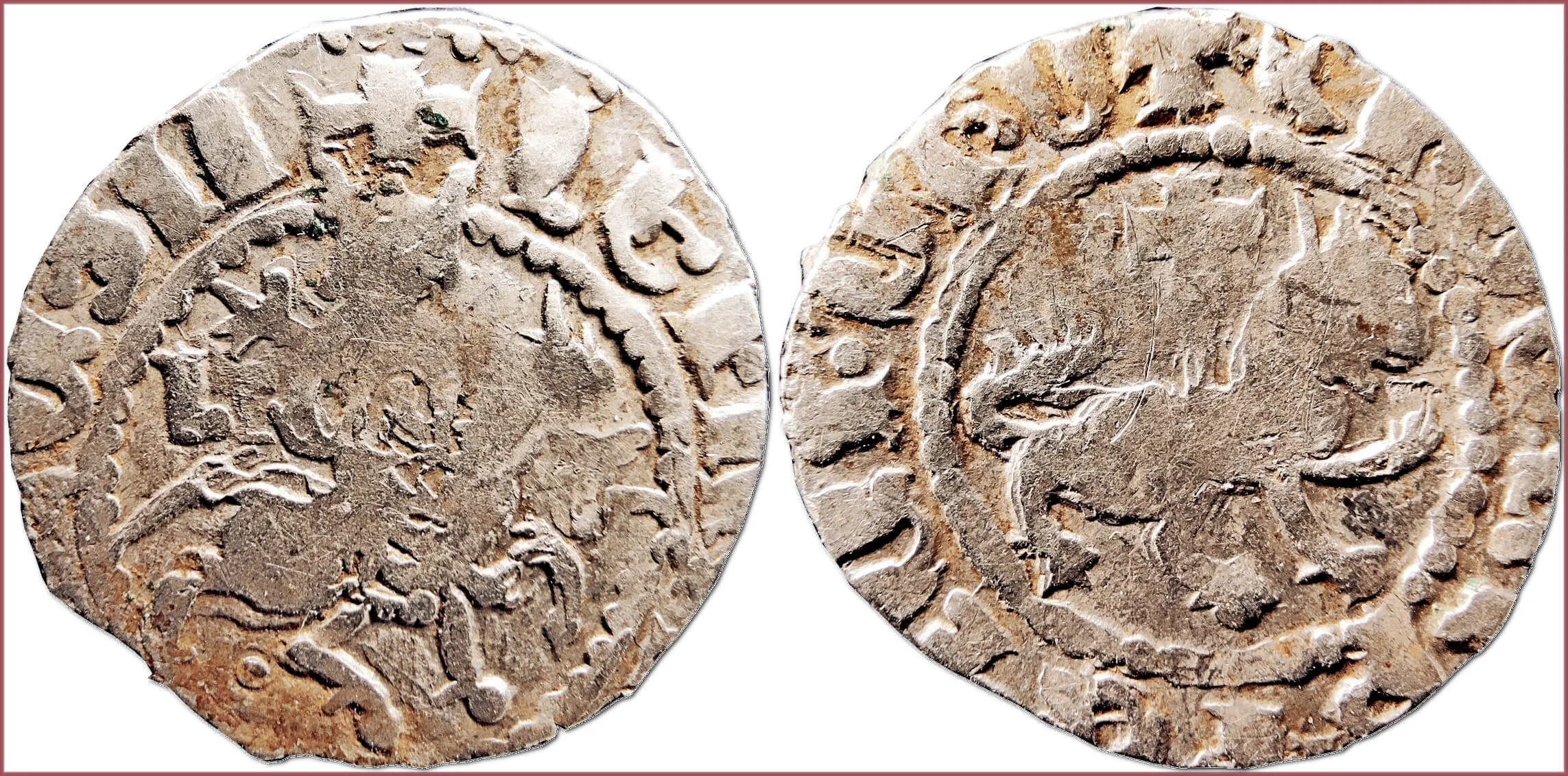TAKVORIN: COIN OF CILICIAN ARMENIA
Takvorin, 1320-1341: Armenian Kingdom of Cilicia
ND (no date).
Ruler: Levon IV (also Leo IV of Armenia or Leon IV or even Leo V) — last Hethumid king of Cilicia, ruling from 1320 until 1341.
ԼԵԻՈՆ ԹԱԳԱԻՈՐ ՀԱՅՈՑ: an abbreviated legend (some letters are missing) of the ruler's name — Levon King of the Armenians.
Crowned king on horseback with scepter in hand. Above the king is a cross. Symbols (difficult to recognize) around the rider.
ՇԻՆԵԱԼ Ի ՔԱՂԱՔՆ Ի ՍԻՍ (some letters are missing): struck in the city of Sis (the capital of the Armenian Kingdom of Cilicia; nowadays located near the modern Turkish town of Kozan in Adana Province).
A lion and a cross above it.
- Silver: 19 mm - 2.38 g
- Reference price: 20$
COIN TAKVORIN — WHERE & WHEN (coins catalog: by names & emitents)
TAKVORIN (tagvorin) as coin name.
Takvorin — silver coin of Cilician Armenia (Armenian Kingdom of Cilicia) during 1301-1373. It replaced the Armenian tram in monetary circulation. A copper kardez was used as an exchange coin of the takvorin.
Takvorins were minted for more than seven decades — during the reign of a number of kings of the Cilician Armenia: Levon III, Oshin, Levon IV, Constantine II, Constantine III, Constantine IV (by the way, there is confusion with the numbering of the rulers of Cilician Armenia — different sources use different numbering; for example, Levon III was crowned as Levon II and Levon IV is also known as Levon III...).
Takvorin coin is known in several varieties, which differ, by and large, exclusively only by the name of the monarch. The main common features have remained unchanged over the years: a rider (a ruler on a horse with a scepter in his hand), an image of a cross over a lion, information about the issuer, the name and title of the ruler.
The weight of the coin was not stable — it varied between 2 and 3 grams depending on the period of issue.
In general, the coin is not considered rare, although it is not among the most common.
The name of the coin takvorin (also used "tagvorin"), according to unconfirmed data, comes from the Armenian term, which literally means "royal coin".











